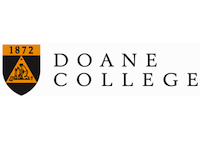Below is a summary of the abstract you submitted. Presenting author(s) is shown in bold.
If any changes need to be made, you can modify the abstract or change the authors.
You can also download a .docx version of this abstract.
If there are any problems, please email Dan at dar78@pitt.edu and he'll take care of them!
This abstract was last modified on March 15, 2022 at 2:35 p.m..

There are an estimated 10^31 bacteriophages on the planet, more than any other organism including all combined bacteria. The Gordonia phage ViaConlectus was found from an enriched soil sample that was collected in Crete, NE in August of 2021. The structure of the phage was examined using Transmission Electron Microscopy (TEM), which showed that it is a siphovirus. ViaConlectus’ DNA was extracted at Doane University and sent to the Pittsburgh Bacteriophage Institute for sequencing, which revealed that the phage was lytic and belonged to the DE4 subcluster. ViaConlectus had a genome length of about 58,888 base pairs, which is shorter than other annotated DE4 genomes. Auto-annotation predicts 86 genes, with differences from other DE4s’ gene content throughout the genome, concentrated near the right end. Using DNAMaster, Phamerator, Starterator, and BLAST data we examined the predicted ORFs for coding potential and possible start sites. Future work will include calling the functions of genes.
